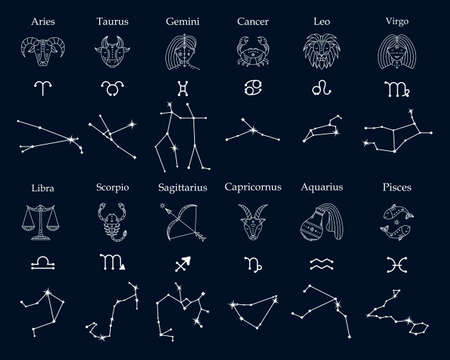Introduction to Leo’s Cultural Significance
The name Leo carries a rich tapestry of meaning and heritage, rooted both in ancient linguistic traditions and the evolving fabric of British society. Deriving from the Latin word for “lion,” Leo has long been associated with strength, nobility, and leadership—qualities that have resonated throughout various epochs of British history. The earliest uses of the name within Britain can be traced back to the influence of Christianity, particularly through saints and popes bearing the name Leo, which helped establish its presence among early medieval communities. As time progressed, the name’s regal and classical connotations began to intertwine with local customs and naming practices, making it a distinctive marker of cultural identity. In this context, Leo evolved beyond its continental origins to become a symbol interwoven with stories of migration, religious reverence, and social aspiration in Britain. This foundational significance set the stage for Leo’s enduring legacy and its multifaceted impact on British cultural development.
2. Leo in British Literature and Arts
Within the landscape of British literature and the arts, the symbol of Leo—both as a zodiac sign and as the lion—has been a recurrent motif representing strength, nobility, and leadership. The figure of Leo has influenced many notable British writers, poets, and artists, shaping the narrative and visual language across centuries.
Leo’s Literary Presence
The British literary canon is rich with references to Leo, often as a symbol of courage or royal authority. For instance, William Shakespeare’s historical plays frequently allude to lions when describing monarchs or valiant characters. In “Richard the Lionheart,” King Richard I’s moniker directly invokes Leo’s qualities, blending historical fact with enduring mythos. Similarly, C.S. Lewis’ character Aslan in “The Chronicles of Narnia” embodies Leo’s traits—wisdom, bravery, and justice—serving as both a literal lion and an allegorical figure for higher ideals.
Table: Notable British Literary Works Featuring Leo
| Author | Work | Leo Reference | Significance |
|---|---|---|---|
| William Shakespeare | Henry V | Lion imagery for kingship | Symbolises royal power and valor |
| C.S. Lewis | The Chronicles of Narnia | Aslan the lion | Moral guide and saviour figure |
| A.A. Milne | Winnie-the-Pooh (Tigger) | Lion-like exuberance in Tiggers characterisation | Represents playful courage and vitality |
| T.S. Eliot | Old Possum’s Book of Practical Cats | Lion references in cat descriptions | Adds majesty and drama to feline characters |
| D.H. Lawrence | The Plumed Serpent | Lion symbolism in character traits | Explores themes of dominance and passion |
Influence on British Visual Arts
Beyond literature, Leo’s presence permeates British art—from regal emblems to modernist paintings. The lion stands proudly on the Royal Coat of Arms, signifying Britain’s enduring association with Leo’s virtues. Artists such as Sir Edwin Landseer immortalised lions in works like “The Lions at Trafalgar Square,” which continue to be celebrated icons within London’s public spaces.
Cultural Resonance in Theatre and Popular Culture
Theatre productions, notably those in the West End, have drawn upon Leo symbolism to convey grandeur or moral struggle. More recently, musicals like “The Lion King” have captivated British audiences, reinforcing Leo’s influence in contemporary culture through storytelling, costume design, and stagecraft.

3. Political and Royal Connections
Within the intricate tapestry of British history, names often act as markers of influence and legacy. While “Leo” may not be as immediately familiar in royal lineages or political rosters as names like George or Elizabeth, it has nonetheless appeared in pivotal moments, leaving a subtle yet distinct imprint on cultural narratives. One notable figure is Leo Amery, a key politician and statesman whose career spanned both World Wars. Serving as Secretary of State for India and Burma, Amery was instrumental in shaping imperial policy and advocating for reforms that echoed throughout the Commonwealth. His assertive stance during debates on national security and his push for Indian independence left a mark on how Britain perceived its role on the global stage.
Though there have been no reigning monarchs named Leo within the British Isles, the name’s association with strength—derived from its Latin meaning ‘lion’—resonates with the lion symbolism central to British royal heraldry. This connection subtly reinforces narratives of power, courage, and leadership within the monarchy and its public image. Occasionally, members of the extended aristocracy or influential circles have borne the name Leo, leveraging its connotations to align themselves with these attributes.
In contemporary times, Leo Docherty MP stands out as a modern bearer of the name within British politics. As Parliamentary Under-Secretary of State for Europe, his contributions to diplomatic relations and defence matters continue the tradition of Leos engaged in governance and public service. These examples, while not always at the forefront of public consciousness, contribute to a broader understanding of how personal names can shape and reflect cultural expectations within political and royal contexts.
4. Religious and Mythological Resonance
The image and symbolism of Leo, the lion, have maintained a prominent position within British religious traditions and mythologies for centuries. This enduring influence is particularly visible in Christian contexts as well as local folklore, where the lion often acts as a bridge between spiritual ideals and cultural narratives.
The Lion in Christianity
Within Christian iconography prevalent across Britain, the lion frequently embodies both strength and righteousness. The most notable example is the association of the lion with St Mark the Evangelist, whose symbol is a winged lion. Many British cathedrals, including those in York and Durham, feature carvings or stained glass depicting lions as guardians of sacred spaces. Furthermore, biblical references to lions—such as “the Lion of Judah” representing Christ’s majesty and authority—have influenced church art, hymns, and sermons throughout British history.
Lion Symbolism in Local Folklore
Beyond the church walls, Leo’s cultural resonance extends into the realm of folklore. In various English legends, lions are depicted as noble protectors or adversaries to be overcome by valiant heroes. For instance, tales from the Arthurian cycle occasionally include references to lions as tests of bravery or divine favour for knights. This symbolism echoes values prized in British society: courage, loyalty, and justice.
Comparative Table: Christian vs. Folkloric Lion Symbolism
| Context | Symbolic Meaning | Notable Example |
|---|---|---|
| Christianity | Majesty, Resurrection, Guardianship | Lion of St Mark; Lion of Judah |
| Local Folklore | Courage, Heroic Challenge, Protection | Lion fights in Arthurian tales |
Integration with Heraldic Traditions
The religious and mythological significance of Leo has also shaped heraldic traditions. Many British families and institutions incorporate lions into their coats of arms not only for royal connotations but also to invoke spiritual protection and legendary heroism rooted in both faith and legend.
Summary Reflection
The multifaceted presence of Leo in both ecclesiastical art and popular narrative demonstrates its deep-rooted influence on British identity. Whether standing guard at cathedral doors or roaring through tales told by the fireside, the lion continues to symbolise qualities that resonate with core aspects of British spirituality and cultural memory.
5. Leo in Modern British Pop Culture
In examining Leo’s presence within modern British pop culture, it becomes clear that the sign has moved beyond its astrological roots and embedded itself into the very fabric of contemporary media, music, and celebrity identity in the UK. The archetype of Leo—characterised by confidence, creativity, and a flair for drama—is frequently mirrored in British television and film. Reality shows such as “Love Island” or “Strictly Come Dancing” often spotlight contestants whose bold personalities are playfully linked to their star signs, with Leos celebrated for their exuberance and leadership on screen.
The British music scene also reflects this fascination. Prominent artists who identify as Leos or are described with Leo-like traits—think Mick Jagger or Dua Lipa—are often portrayed in interviews and tabloids as embodying the sign’s signature charisma and showmanship. This cultural shorthand allows journalists and fans alike to communicate expectations about ambition, presence, and style in a distinctly British context, where understatement is typically valued but exceptions are made for those who “own the stage” in true Leo fashion.
Moreover, British celebrity culture frequently references astrology in light-hearted yet meaningful ways. Magazines such as “Cosmopolitan UK” or segments on BBC Radio 1 may profile celebrities’ star signs, using Leo as a marker for boldness and creative prowess. These representations influence how the public perceives not only individual celebrities but also the general concept of being a Leo—often intertwining ideas of royalty (a nod to Britain’s monarchy) with personal magnetism.
On social media platforms like Twitter and Instagram, British users regularly engage with memes and horoscopes that highlight Leo traits. This digital discourse sustains a playful collective identity among self-identified Leos, reinforcing the association between the sign and qualities such as self-assurance and generosity. Importantly, this phenomenon is not limited to youth culture; it permeates all age groups, indicating the broad resonance of astrological symbolism in everyday British life.
In summary, Leo’s influence in modern British pop culture is multifaceted: it shapes how personalities are crafted in media narratives, informs public perceptions of celebrities, and fuels ongoing conversations about identity across traditional and digital platforms. As an emblem of performance and pride, Leo continues to captivate the British imagination in both subtle nods and overt celebrations throughout popular culture.
6. Conclusion: Enduring Legacy
Reflecting on Leo’s cultural influence throughout British history, it becomes clear that his legacy is both enduring and dynamic. Leo’s presence in British culture has transcended generations, adapting to shifting social landscapes while retaining core elements of inspiration and aspiration. His symbolic value—often associated with courage, leadership, and creativity—continues to resonate within the collective consciousness of British society. Whether through literature, visual arts, or popular traditions, Leo’s impact can be seen in the ways communities celebrate their heritage and express national identity. Today, as Britain navigates new cultural challenges and opportunities, the figure of Leo remains a touchstone for values that are both historic and ever-evolving. Ultimately, Leo’s ongoing influence is woven into the fabric of British cultural identity, serving as a reminder of the nation’s rich past and its continual journey towards self-definition.


